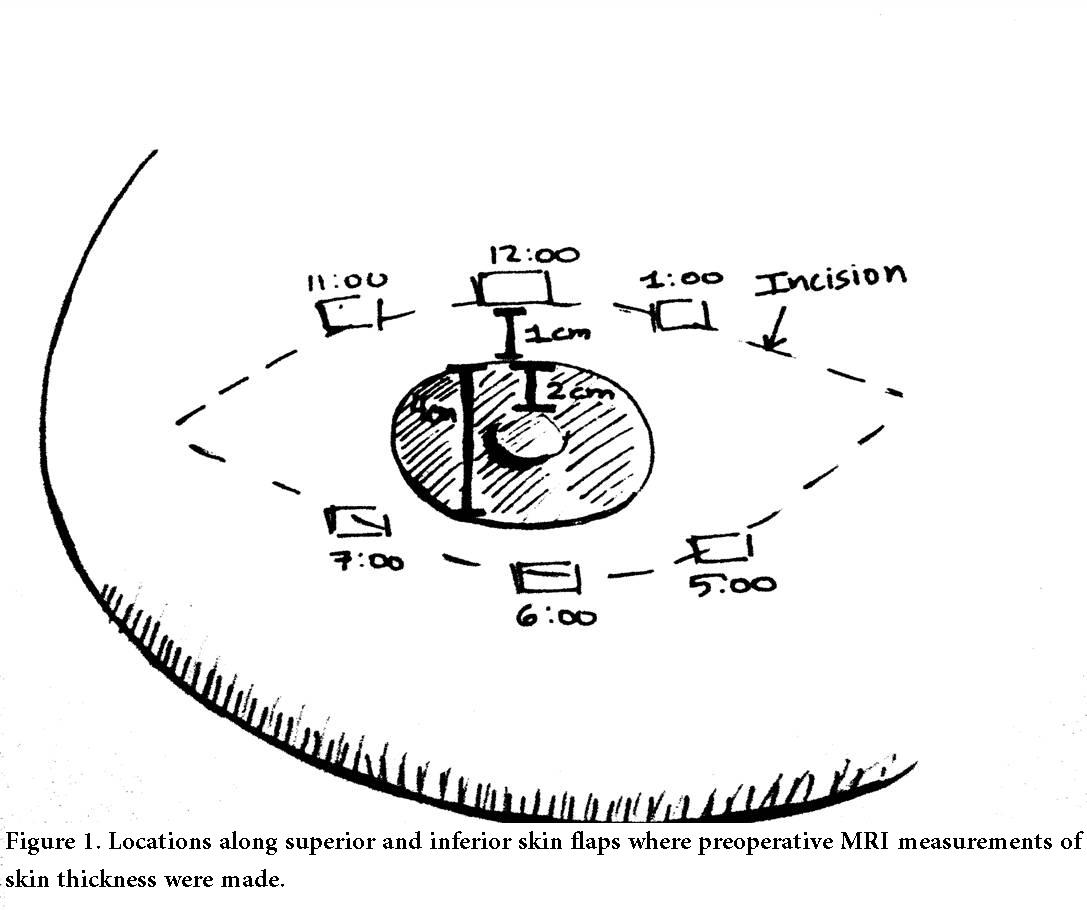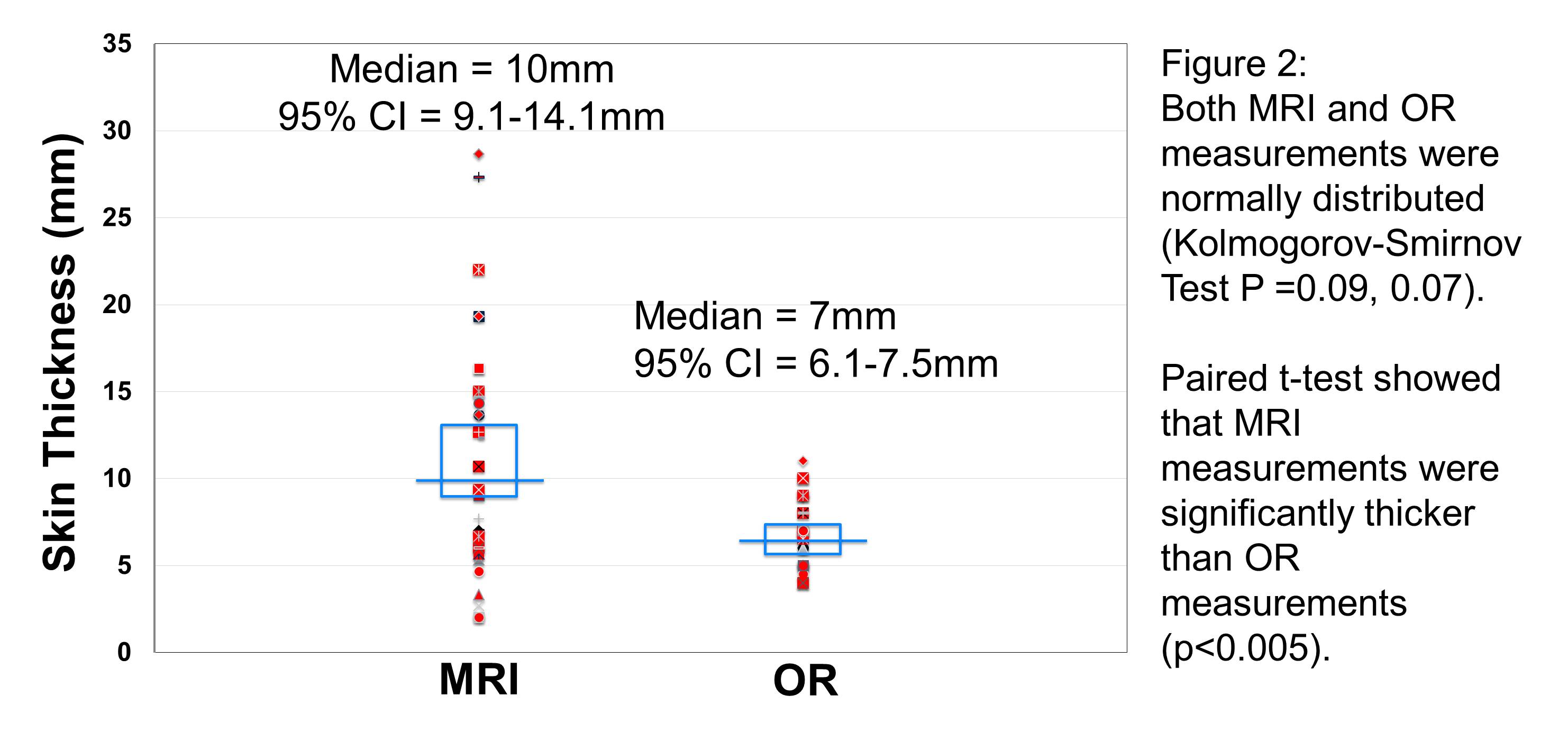|
|
 |
Back to Program Outline
Back to Posters
Topic:
Use of Pre-operative MRI to Predict Tissue Thickness of Mastectomy Skin Flaps
Ahmed E. Nasser, MD, Brett Huston, MD, Aditi Kanth, BS, Mitchell Fourman, MPhil, Roxanne Palermo, MD, Paul Fisher, MD, Christine Rizk, MD, Duc Bui, MD, Tara Huston, MD.
Stony Brook University Hospital, Stony Brook, NY, USA.
BACKGROUND:
Flap necrosis following skin-sparing mastectomy occurs in up to 12% of patients. Flap necrosis is thought to result from compromised blood flow following excision of subcutaneous tissue with underlying breast parenchyma. As such, novel approaches to avoid removing excess subcutaneous tissue may help prevent mastectomy flap necrosis. To determine the extent of breast skin excision during skin-sparing mastectomy, we compared measurements of skin thickness via preoperative MRI versus intra-operative skin flap thickness.
METHODS:
We designed a retrospective case review of 12 patients who underwent preoperative MRI followed by skin-sparing mastectomy with intra-operative mastectomy flap thickness measurement. An experienced radiologist, blinded to surgical outcome or complications, measured average skin thickness where the superior and inferior skin flaps are developed. These pre-operative measurements were then compared with mastectomy flap thickness measurements obtained in the operating room. MRI measurements were also compared with historical controls consisting of histological measurements of normal breast tissue specimens following reduction mammoplasty.
RESULTS:
Based on MRI, median thickness of the flaps was 10.0mm (IQ range 6.0-15.0mm) and mean was 11.6mm (95% CI 9.1-14.1mm). Intra-operative skin flap thickness had a median of 7.0mm (IQ range 5.0-9.0mm) and a mean of 6.8mm (95% CI 6.1-7.5mm). Both MRI and OR measurements were normally distributed (Kolmogorov-Smirnov Test P =0.09, 0.07) and a paired t-test showed that MRI measurements were significantly higher than OR measurements (p=0.0006).
CONCLUSIONS:
Mastectomy flap measurements are consistently thinner than preoperative skin thickness measurements via MRI. Interestingly, MRI measurements are much closer to published histological reports of normal breast skin thickness. Currently, mastectomy flap thickness is determined predominantly by intra-operative findings. Our results suggest that preoperative MRI may aid the breast surgeon to perform a more limited skin and subcutaneous tissue dissection.  
Back to Program Outline
Back to Posters
|








